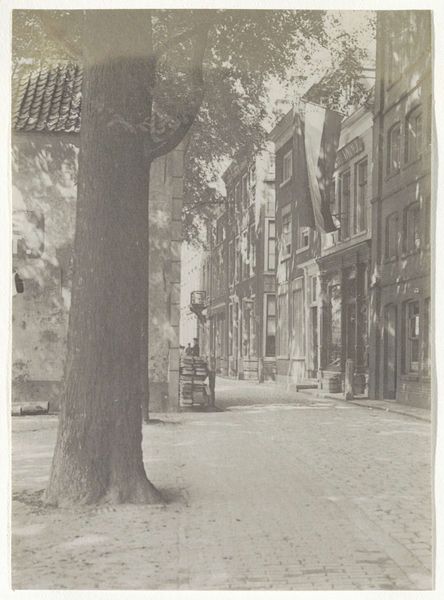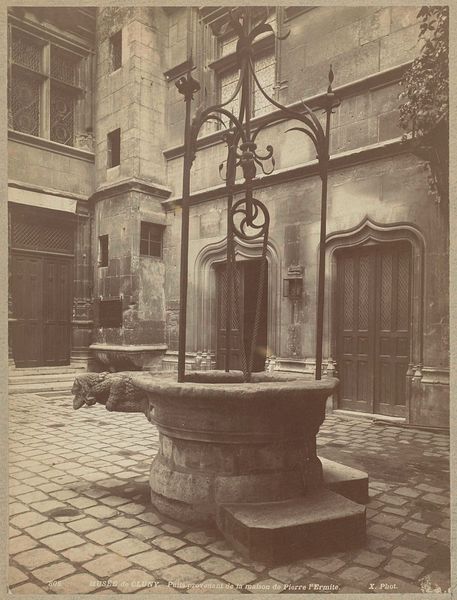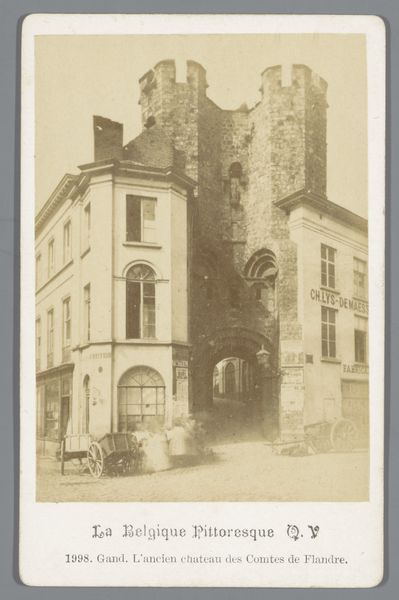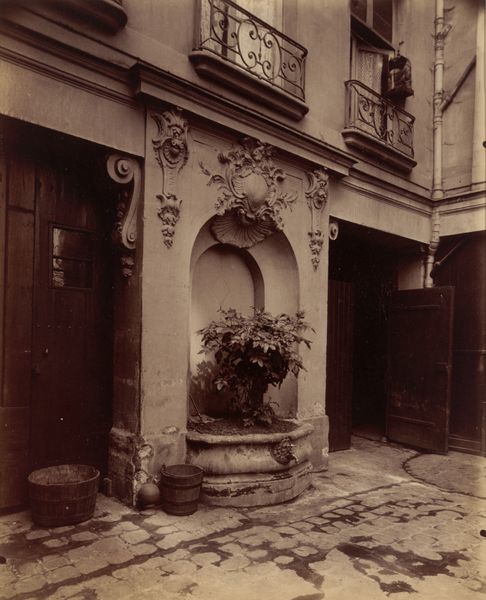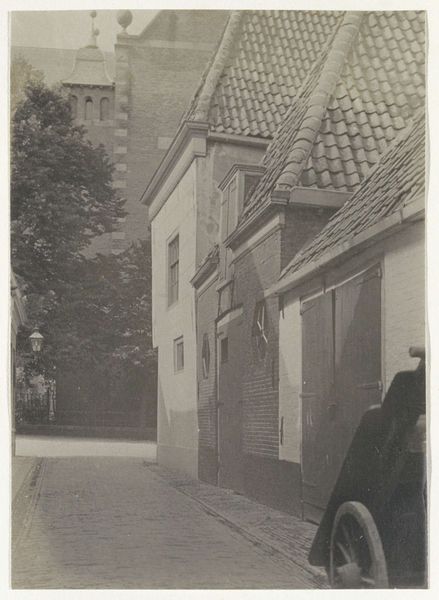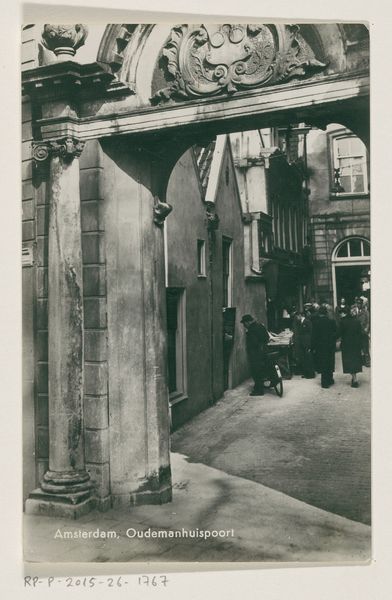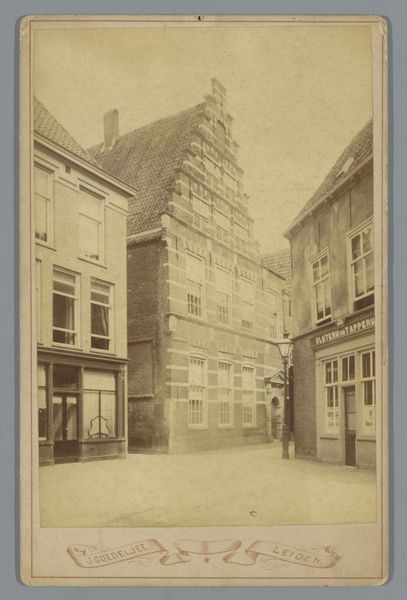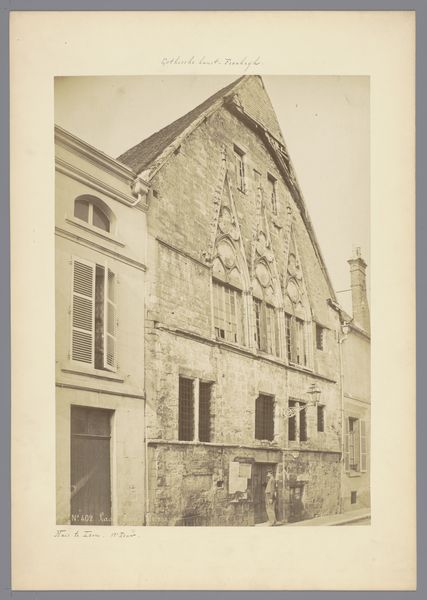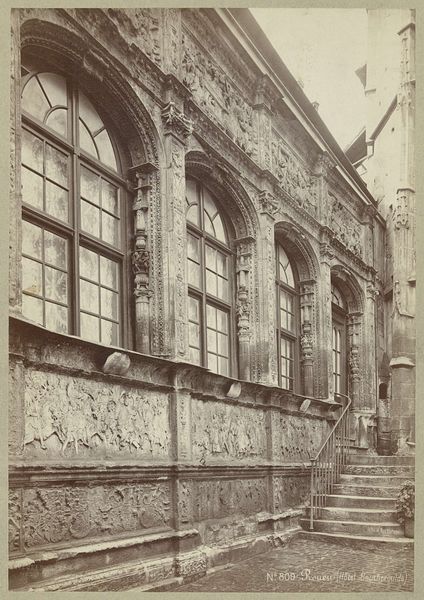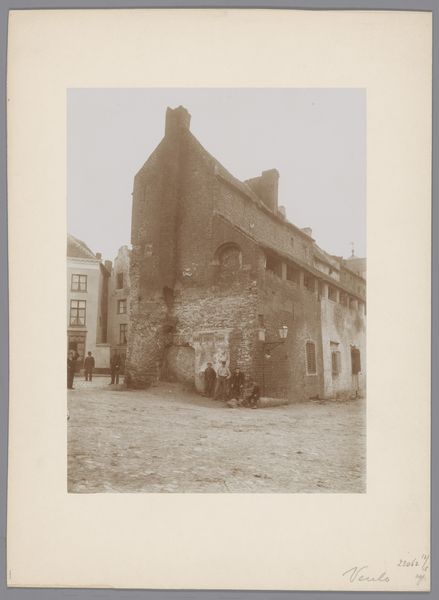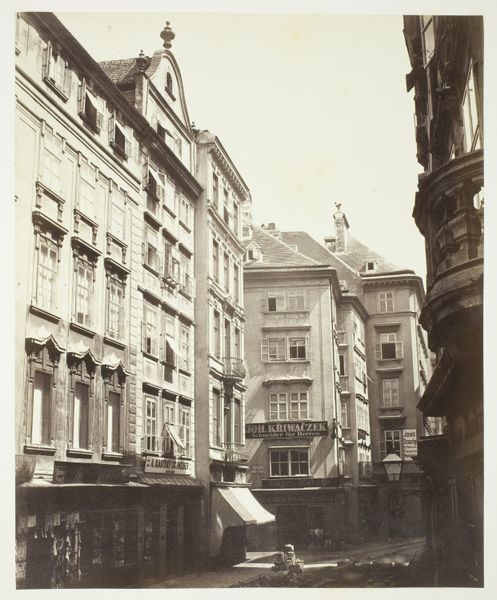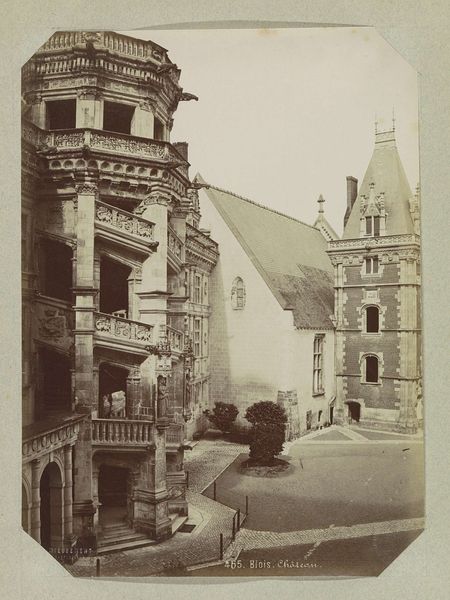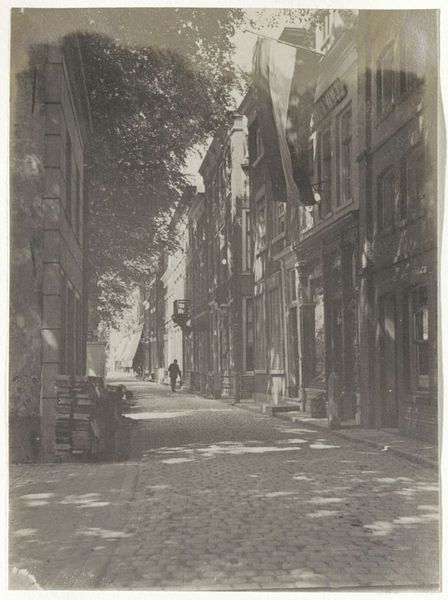
Put van Quinten Metsijs op de Handschoenmarkt in Antwerpen c. 1870 - 1892
0:00
0:00
gustavehermans
Rijksmuseum
print, bronze, photography
#
portrait
#
pictorialism
# print
#
landscape
#
bronze
#
historic architecture
#
street-photography
#
photography
#
historical photography
#
19th century
#
cityscape
Dimensions: height 179 mm, width 122 mm
Copyright: Rijks Museum: Open Domain
Curator: Here we have a print titled "Put van Quinten Metsijs op de Handschoenmarkt in Antwerpen," taken circa 1870-1892. It's a cityscape photograph showcasing the iconic well in Antwerp. Editor: Immediately, I’m struck by the almost gothic quality, that wrought iron structure reaching skyward... and the light, filtering through it, feels incredibly somber. Curator: Yes, the image certainly evokes a sense of a bygone era. The photograph presents more than just a pretty cityscape, as street photography opens a window onto labor, class, and urbanization of the late nineteenth century. Notice the layers within the architecture and its presence as public art, specifically made for the market square as a result of labor from its inhabitants. It offers insight into historical dynamics, highlighting the architecture and everyday scenes reflecting this transformation in Antwerp during this period. Editor: I'm intrigued by that figure at the very top of the well. He's holding something aloft—a scroll, perhaps? Is this connected to the story of Quinten Matsys, the blacksmith-turned-artist for whom the well is named? Is it a visual cue tying him to trade and, eventually, artistry? Curator: Indeed. Legends hold that Matsys, originally a blacksmith, became a painter to win the heart of an artist's daughter. The well itself becomes symbolic: craft evolving into fine art. This narrative arc fits into contemporary theories of social mobility and the fluid boundaries between working-class identities and artistic recognition. Editor: It seems photography at this time, was just beginning to find its place, finding new opportunities to reveal stories layered into cities like Antwerp, making public squares like this accessible to larger audiences, revealing something deeper to audiences. Curator: Precisely. These photographic cityscapes don’t merely record architecture; they serve as a social text, reflecting the interwoven identities of the population through architecture. Editor: Examining how the figure stands resolute over time as a symbol gives pause to a range of interpretations that extend far beyond a historicized, static image. I wonder, even now, what does it stand for when viewers meet this work? Curator: Looking at this photograph and questioning this work, with its bronze monument in a bronze print is to unpack stories about social mobility, aspiration, and the layered narratives present in everyday settings. The image presents as a compelling moment from art history. Editor: For me, it's that almost haunting mood – that visual echo of craftsmanship and legacy carried across the ages.
Comments
No comments
Be the first to comment and join the conversation on the ultimate creative platform.
